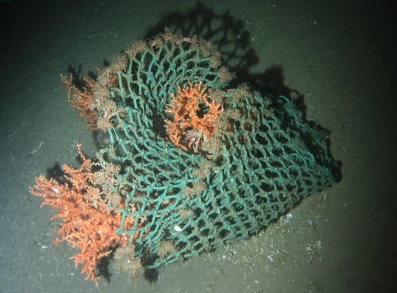Christopher Pham, University of the Azores, Ponta Delgada, Portugal, and scientists from fifteen different European research institutions including the Alfred Wegener Institute, Bremerhaven, Germany, conducted the first wide-ranging survey of litter in European waters. The team used bottom trawls, video recordings, and photographs in 32 different marine regions in the Northeast Atlantic, Arctic Ocean, and Mediterranean.
They found litter in every region including the Arctic. The largest quantities were found near densely populated areas and in deep-sea canyons. Canyons sometimes connect the flat coastal waters with the abyssal plain and so may enable the downward transport of litter from the coasts into distant, deeper waters. The team found abandoned fishing gear, glass bottles, metal, and, most frequently, plastic.
How litter is spread across the seas is still unclear. Ocean currents, topographic features, and increasing ship traffic surely play an important role. Plastic is persistent and light, so can be carried over long distances by marine currents. In the Arctic, the reduction of the sea ice has probably enabled more litter reaching the far north as ship traffic increases.
Unclear is also how much litter is hidden on the floors of the oceans and how it affects marine organisms. It is known that animals like sea birds and marine mammals confuse litter with food and that they become entangled in abandoned fishing gear. However, nearly nothing is known about the effects of litter on residents of the (deep) seafloor.
Cargo net entangled in a cold-water coral colony at 950 m in Darwin Mound (north west coast of Scotland).
(Photo: Veerle A.I. Huvenne, National Oceanography Centre, University of Southampton, UK)
- Marine litter distribution and density in European Seas, from the shelves to deep basins,
PLOS ONE 2014.
DOI: 10.1371/journal.pone.0095839
Also of interest:
- Info-operetta about plastic in our oceans (Seas At Risk 2014)
- A world-first study of the plastics around Australia’s coastline (Catalyst ABC TV 2012)




